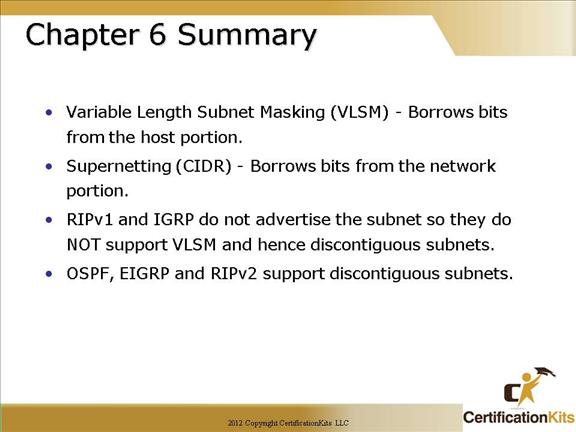Cisco CCNA Discontiguous Addressing
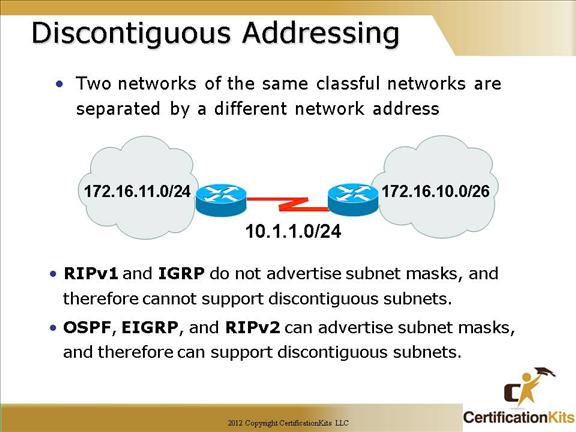
If you create VLSM network, sometimes you may find that the backbone connecting buildings together is a different class of network. This is called discontiguous addressing.
By default routing protocols will not work across discontiguous networks. By using the “no auto-summary” command on the network boundaries, routing protocols will be able do work across a discontiguous addressed network.
Cisco CCNA VLSM Question
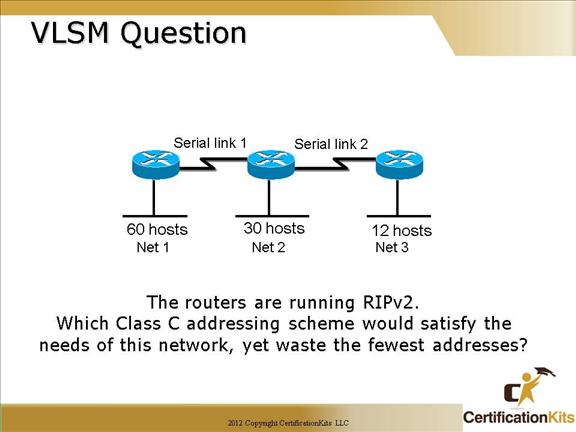
Answer:
Network 1: 192.168.10.0/26 – Equates to 192.168.10.0 255.255.255.192, block size of 64
Network 2: 192.168.10.64/27 – Equates to 192.168.10.64 255.255.255.224, block size of 32
Network 3: 192.168.10.96/28 – Equates to 192.168.10.96 255.255.255.248, block size of 16
Serial link 1: 192.168.10.112/30 – Equates to 192.168.10.112 255.255.255.252, block size of 4
Serial link 2: 192.168.10.116/30 – Equates to 192.168.10.116 255.255.255.252, block size of 4
Cisco CCNA What is Route Summarization?
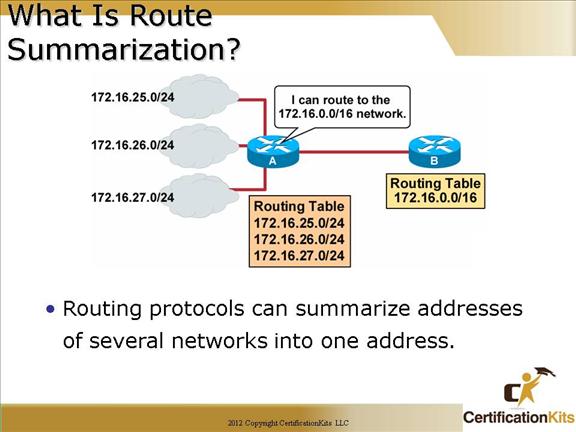
Route summarization forms a supernet. This is an IP network that is formed from the combination of two or more networks (or subnets) with a common Classless Inter-Domain Routing (CIDR) routing prefix. In other words, it is a block of contiguous subnetworks that are addressed as a single subnet.
An example is that subnets 192.168.1.0/24 through 192.168.3.0/24 can be summarized as 192.168.1.0/22.
Be careful not to over summarize as it can cause black holes in routing.
Cisco CCNA Route Summarization
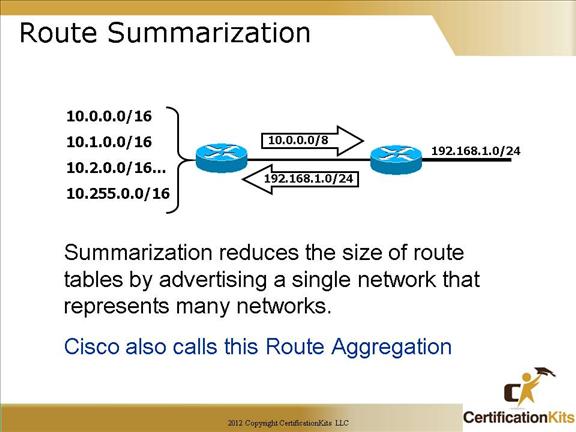
Summarization is not always possible because unless you design and implement the network with summarization in mind, you will not find contiguous boundaries in which to implement summarization.
Route summarization can significantly reduce the size of routing tables if implemented correctly. If not implemented correctly it can cause problems such as black holes if the routes are over summarized.
Cisco CCNA Implementing Summarization
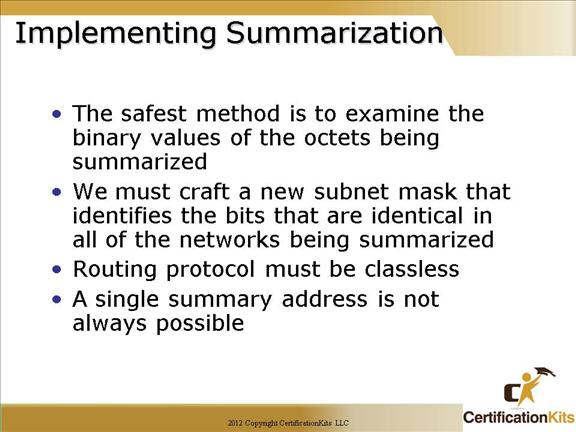
Summarization is easy if you just know your block sizes….
Cisco CCNA To finsd a Summary Address…
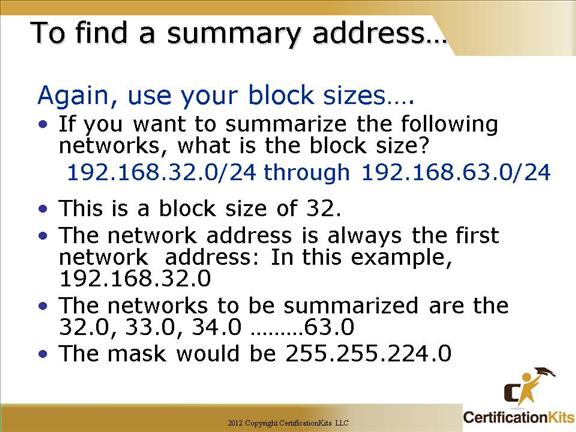
Since this is a block size of 32, the mask would be 255.255.224.0
Know your powers of 2 and this goes a lot faster.
Cisco CCNA Route Summarization Examples
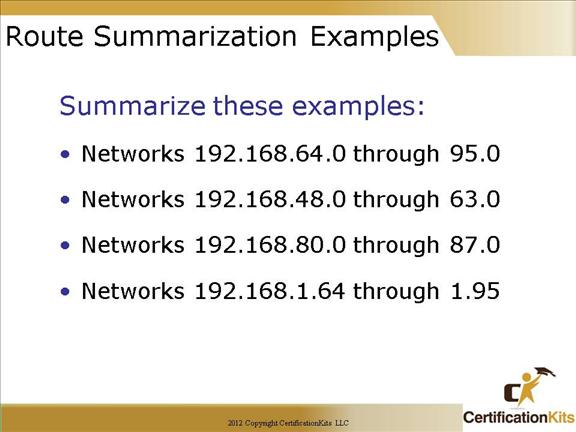
Answers to examples:
192.168.64.0 255.255.224.0
192.168.48.0 255.255.240.0
192.168.80.0 255.255.248.0
192.168.1.64 255.255.255.224
Cisco CCNA Summary Question
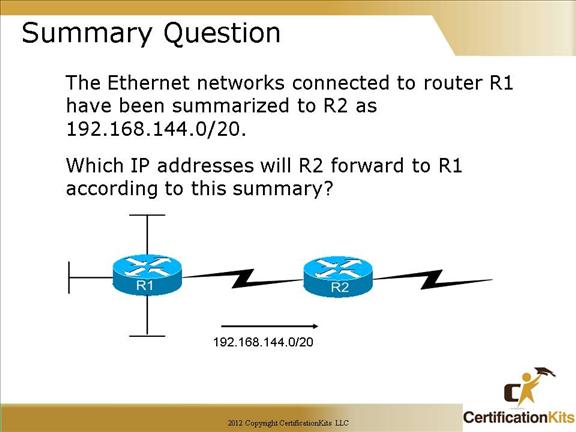
The subnet is 192.18.144.0 and the mask is 255.255.240.0
This is a block of 16 in the third octet
The router will forward packets with a destination of the following addresses:
192.168.144.0 (Network address, not forwarded)
192.168.144.1 (beginning of host range)
192.168.159.254 (end of host range)
192.168.159.255 (broadcast address, forwarded)
Cisco CCNA Summary
